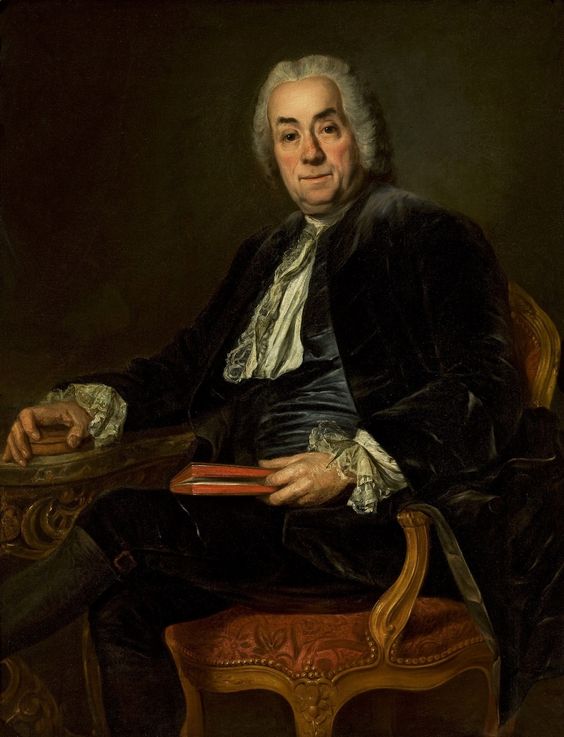ANNE CLAUDE DE CAYLUS
Anne-Claude-Philippe de Caylus (1692-1765), usually named Comte de Caylus, was a French antiquary and man of letters. He was born in Paris and at an early age joined the French army during the War of the Spanish Succession. After the war he left the army to study art and archaeology. He travelled to England, Germany and Italy, and to Constantinople and Greece, to study antiquities. He assembled an impressive collection of art and antiquities and his studies influenced the famous scholar Winckelmann, the German theorist of neo-classicism. He was admitted to the Académie de Peinture et Sculpture in 1731 and to the Académie des Inscriptions et Belles-lettres in 1742. He also wrote erotic stories (Histoire de Mr. Guillaume, cocher, 1740; Oeuvres badines, 1757) and fairy tales. In 1745 he published Contes orientaux, a collection of Oriental tales taken from the material preserved in the Royal Library and translated by students of Oriental languages in Istanbul (the jeunes de langue).
The fragments:
The Nouveaux contes orientaux (1743) is a collection of tales translated from Turkish and Arabic made by students of the French school of Oriental languages in Constantinople, the so-called jeunes de langue. The school was founded by the famous Minister of trade Colbert, as part of his project to revive France’s overseas trade and connections with the Levant. The students translated various kinds of texts and the translations (or parts thereof) were preserved in the archive of the Royal Library. Caylus’ compilation of this material fits into the fashion of the Oriental tale at the time, following the publication of Galland’s Mille et une nuit. The material translated by the jeunes de langues and published by Pétis de la Croix (Mille et un jours), Cardonne and Comte de Caylus illustrate the interest in original Oriental material – beside pseudo-Oriental tales – in the 18th century and the gradual transfer of this material to Europe with Constantinople as a cultural/literary repository. It also gives an impression of literary taste in the Ottoman Empire in the 17th and 18th centuries.
The cycle begins with a framing story about a governor who is unable to sleep after having incarcerated the last sage of the empire. The daughter of the vizier, Moradbak, offers to tell him stories, which she has heard from the sage in question. A chain of stories follows, after the example of the Thousand and one nights, all translated from Turkish manuscripts by students of Oriental languages in the 1730s and 1740s, but adapted and edited by Caylus. Some stories are amalgamated into one story or split up into several parts. The sources are ‘Histoire extraordinaire d’un certain Sélim de Vasith, ville de Chaldée en Asie,’ ‘L’histoire des sept dormants sous l’empire de Decius,’ ‘Le visionnaire turc, ou l’histoire surprenante arrive à Bouloukia,’ ‘L’Humaion name,’ ‘Histoire de Suleïman et de Muslim,’ ‘Poème turc sur une esclave d’un très riche marchand de Bagdad,’ ‘Histoire arrivé à Scudar,’ ‘Miracles opérés par les cheikhs,’ Histoire de Behram Gur roi de Perse,’ and ‘Receuil de différentes histoires’.
The fragments selected here are: the framing story; ‘Histoire de Diakanos et des sept dormants’, which contains the Muslim version of the story of the seven sleepers, or the sleepers of the cave, probably based on Syriac sources; ‘Histoire de la naissance de Mahomet,’ which is an adapted version of the story of Buluqiya/ Tamim al-Dari, which can also be found in the Thousand and one nights. It relates the journey of an ancient sage to acquire eternal life in order to be able to encounter the Prophet Muhammad and contains an eschatological vision of the earth shown to Buluqiya by various angels. The story of Buluqiya is probably of ancient Jewish origin, but remained popular especially in Turkish versions of the 15th-17th centuries. The story of Tamim al-Dari is a similar eschatological tale. In this version the journey is distributed over several historical figures and related to the birth of Muhammad; and ‘Histoire du portefaix,’ which is of the same genre as many stories of the Nights. Among the remarkable tales is the story of ‘Bedihuldgemal et Seifulmulouk’, which is a romance well-known throughout Asia in Persian and Turkish versions and which was incorporated into the Thousand and one nights in the manuscript versions of the late 18th century ( story of ‘Sayf al-Muluk and Badi’at al-Jamal’). He story was first published in Caylus’ collection Le pot-pourri (1748), after a more garbled French version had been published in Pétis de la Croix’s collection Mille et un jours. The story is omitted in Julie Bloch’s edition of Contes.

Sources/references:
Comte de Caylus, Contes, ed. Julie Bloch, Honoré Champion, Paris 2005.
Ig. Aghion (éd.), Caylus mécène du roi. Collectionner les antiquités au XVIIIe siècle, INHA, Paris 2002.
Simone Gougeaud-Arnaudeau, Le comte de Caylus (1692-1765), pour l’amour des arts, L’Harmattan, Paris 2010.
Samuel Rocheblave, Essai sur le comte de Caylus: l’homme, l’artiste, l’antiquaire, Hachette, Paris 1889. (Nabu Public Domain Reprints)
Francesca Bellino, ‘Tamim al-Dari the intrepid traveller: emergence, growth and making of a legend in Arabic literature,’ Oriente moderno, Nouova serie, vol. 89, no 2 (2009), Studies in Islamic legends, pp. 197-225.